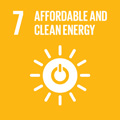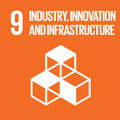- Docente: Marco Chiani
- Credits: 6
- SSD: ING-INF/03
- Language: Italian
- Moduli: Marco Chiani (Modulo 1) Dario Maio (Modulo 2)
- Teaching Mode: Traditional lectures (Modulo 1) Traditional lectures (Modulo 2)
- Campus: Cesena
- Corso: Second cycle degree programme (LM) in Electronics and Telecommunications Engineering for Energy (cod. 8770)
-
from Feb 20, 2025 to May 13, 2025
-
from Mar 06, 2025 to Mar 27, 2025
Learning outcomes
The student acquires the knowledge of the fundamental concepts and technologies for quantum information engineering, specifically the protocols and algorithms for quantum communications and computing: qubits, entanglement, quantum gates, quantum information processing, quantum algorithms, error correction, quantum protocols for the secure distribution of cryptographic keys. At the end of the course the student is able to design basic quantum protocols and algorithms, and to test them on quantum computers accessible via cloud.
Course contents
- Prerequisites
The course (in Italian) is intended for students in master's programs in electronic engineering, telecommunications, computer science, biomedical engineering, and automation. In order to effectively follow the lessons, students should be familiar with operations in the field of complex numbers and have knowledge of the fundamentals of linear algebra. However, the course includes some review on these topics.
- Program
Principles of quantum mechanics: quantum states, qubits, composite quantum systems, quantum measurements and operations. Entanglement, the EPR paradox, Bell's theorem, the no-cloning theorem. Quantum computation: single-qubit and two-qubit gates, sets of universal gates. Quantum algorithms: quantum Fourier transform, period-finding algorithm, Shor's factoring algorithm, breaking RSA encryption with Shor's algorithm, Grover's search algorithm. Quantum error correction: stabilizer codes, surface codes. Quantum communication: purification and teleportation, quantum key distribution, BB84 protocol, Quantum Internet.
Additional introductory topics covered in the course include: applications to security and sensing, solving systems of linear equations, quantum machine learning, and quantum neural networks.
Readings/Bibliography
Notes provided by the instructors.
For further reading: Michael A. Nielsen, Isaac L. Chuang, "Quantum Computation and Quantum Information", Cambridge University Press, 2010
John Preskill, "Quantum Computation" (lecture notes)
M. M. Wilde, “Quantum information theory”, Cambridge University Press, 2013.
E. G. Rieffel, W. H. Polak, “Quantum computing: A gentle introduction”, MIT Press, 2011.
N. D. Mermin, “Quantum computer science: an introduction”, Cambridge University Press, 2007.
Teaching methods
The course, which takes place in the second semester, is taught in Italian and consists of 50 hours of instruction, including 12 hours in the laboratory.
It is structured with classroom lectures where the theoretical aspects of the topics covered are presented, as well as interactive and hands-on laboratory sessions. A real quantum computer accessible via the cloud will be used during the lab sessions, providing guided exercises to enhance the learning experience.
The exercises, which will take place both in the classroom and in the laboratory, are designed so that within each session, students can practically implement the solutions to the problems outlined in theoretical form during the lectures.
Assessment methods
The exam consists of two parts:
• Completion of a project, which can involve developing an application related to one or more topics covered in the course or writing a report that illustrates the contents of a scientific article on quantum information, including a critical analysis of the proposed approach and potential practical implications. The submission of the documentation related to the project (including the developed software, if applicable) is necessary to take the oral examination.
• An oral examination, which involves discussing the project and answering further questions on the course syllabus.
The final grade, on a thirty-point scale, takes into account the evaluations from both parts.
Teaching tools
For the implementation of quantum circuits and the development of quantum algorithms, both IBM quantum computers available in the cloud and simulators are used. The OpenQASM and Python languages with the Qiskit SDK are utilized by writing code in a notebook environment.
Office hours
See the website of Marco Chiani
See the website of Dario Maio
SDGs




This teaching activity contributes to the achievement of the Sustainable Development Goals of the UN 2030 Agenda.
